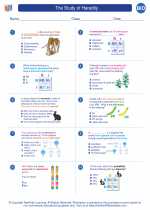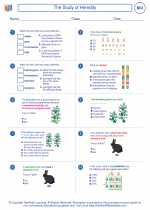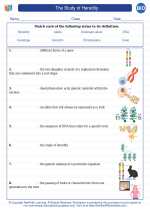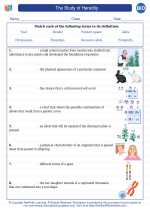The Study of Heredity
Heredity is the passing on of traits from parents to their offspring. It is the reason why children often look like their parents and share similar characteristics. The study of heredity is crucial in understanding how traits are inherited and how genetic variation occurs within a population.
Mendelian Genetics
The study of heredity was revolutionized by the work of Gregor Mendel, an Austrian monk, who conducted experiments on pea plants and formulated the principles of inheritance. Mendel's laws of segregation and independent assortment laid the foundation for the field of genetics.
Genes and Alleles
Genes are the units of heredity that are passed from parents to offspring. Each gene exists in different forms, called alleles, which can result in different traits being expressed. Alleles can be dominant or recessive, and their interactions determine the phenotype of an organism.
Chromosomes and Inheritance
Genes are located on chromosomes, which are long, thread-like structures found in the nucleus of cells. During sexual reproduction, offspring receive half of their chromosomes from each parent, leading to genetic diversity and the inheritance of traits from both parents.
Modern Genetics
Advancements in technology have allowed scientists to study heredity at the molecular level. The discovery of DNA and the human genome has provided insights into the mechanisms of inheritance and the role of genes in determining traits and predispositions to certain diseases.
Study Guide
- Explain the principles of inheritance according to Gregor Mendel's laws.
- Define genes and alleles and describe how they contribute to the variation in traits among individuals.
- Discuss the role of chromosomes in the inheritance of genetic information.
- Compare and contrast dominant and recessive alleles, and provide examples of how they determine phenotypes.
- Examine how modern genetic research has furthered our understanding of heredity and its implications.
Understanding heredity is fundamental to many fields of biology, including evolutionary biology, medicine, and agriculture. By comprehending the mechanisms of inheritance, we can better appreciate the diversity of life and the factors that contribute to individual variation.
[The Study Of Heredity] Related Worksheets and Study Guides:
.◂Biology Worksheets and Study Guides High School. The Study of Heredity

 Worksheet/Answer key
Worksheet/Answer key
 Vocabulary/Answer key
Vocabulary/Answer key
 Vocabulary/Answer key
Vocabulary/Answer key
 Vocabulary/Answer key
Vocabulary/Answer key
